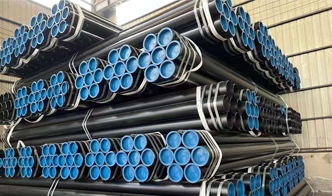-
Cangzhou Yulong Steel Co., Ltd.
-
Phone:
+86 13303177267 -
Email:
admin@ylsteelfittings.com
- English
- Arabic
- Italian
- Spanish
- Portuguese
- German
- kazakh
- Persian
- Greek
- French
- Russian
- Polish
- Thai
- Indonesian
- Vietnamese
- Zulu
- Korean
- Uzbek
- Hindi
- Serbian
- Malay
- Ukrainian
- Gujarati
- Haitian Creole
- hausa
- hawaiian
- Hebrew
- Miao
- Hungarian
- Icelandic
- igbo
- irish
- Japanese
- Javanese
- Kannada
- Khmer
- Rwandese
- Afrikaans
- Albanian
- Amharic
- Armenian
- Azerbaijani
- Basque
- Belarusian
- Bengali
- Bosnian
- Bulgarian
- Catalan
- Cebuano
- China
- China (Taiwan)
- Corsican
- Croatian
- Czech
- Danish
- Esperanto
- Estonian
- Finnish
- Frisian
- Galician
- Georgian
- Kurdish
- Kyrgyz
- Lao
- Latin
- Latvian
- Lithuanian
- Luxembourgish
- Macedonian
- Malgashi
- Malayalam
- Maltese
- Maori
- Marathi
- Mongolian
- Myanmar
- Nepali
- Norwegian
- Norwegian
- Occitan
- Pashto
- Dutch
- Punjabi
- Romanian
- Samoan
- Scottish Gaelic
- Sesotho
- Shona
- Sindhi
- Sinhala
- Slovak
- Slovenian
- Somali
- Sundanese
- Swahili
- Swedish
- Tagalog
- Tajik
- Tamil
- Tatar
- Telugu
- Turkish
- Turkmen
- Urdu
- Uighur
- Welsh
- Bantu
- Yiddish
- Yoruba

Dec . 30, 2024 09:56 Back to list
sa 333 gr6
The Importance of SA 333 in the Manufacturing Sector
In recent years, Grade 333 or SA 333, recognized for its unique properties and versatility, has gained significant traction within the manufacturing sector. This grade of carbon steel is especially valuable due to its excellent impact resistance and capability to endure extreme temperatures. As industries continue to evolve, the demand for reliable materials like SA 333 is paramount.
Understanding SA 333
SA 333, often termed as A333 Grade 6, is a specification under the ASTM standard, which outlines the requirements for seamless and welded steel pipes intended for low-temperature service. This material is primarily used in the fabrication of pipes for installations in the oil and gas industries, power plants, and various industrial applications.
Key Properties of SA 333
One of the most significant characteristics of SA 333 is its low-temperature impact toughness. This property ensures that the steel maintains its strength and ductility even under frigid conditions. Such qualities make it an ideal choice for regions that experience extreme winter weather or for applications that involve cryogenic processes. Furthermore, SA 333 possesses good weldability, allowing it to be easily joined to other materials without compromising integrity.
Additionally, the chemical composition of SA 333 includes a low carbon content, which enhances its weldability and mitigates the risk of making the material brittle. The inclusion of manganese aids in improving the toughness of the steel, while other elements, such as phosphorus and sulfur, are kept to a minimum to enhance its mechanical properties.
Applications of SA 333
The applications of SA 333 are incredibly diverse, primarily due to its robustness and durability. In industries where temperature variations can be severe, such as oil and gas extraction, pipelines made from SA 333 can perform reliably, ensuring the safe and efficient transport of gaseous and liquid substances.
sa 333 gr6

Moreover, the power generation sector also heavily relies on this grade for constructing internal components exposed to low temperatures, such as the pipes used in steam condensate recovery systems. In this context, the use of SA 333 not only ensures operational efficiency but also enhances safety protocols within the facility.
Benefits of Using SA 333
One of the primary benefits of employing SA 333 is heightened operational safety. The resilience provided by this grade of steel under low temperatures means that there is a lower likelihood of failures or catastrophic incidents, which could arise from material weaknesses in extreme conditions.
Furthermore, when considering the lifecycle cost of materials, SA 333 proves to be cost-effective. While initial procurement costs may be somewhat elevated compared to lower-grade materials, the long-term benefits and savings from reduced maintenance needs and fewer downtime incidents significantly outweigh these preliminary expenses.
Conforming to Standards
Compliance with ASTM standards is critical for manufacturers and companies that implement SA 333 in their processes. These standards assure consumers and businesses that the materials meet specific mechanical and chemical property requirements, thereby guaranteeing quality and reliability. Adhering to such standards not only builds customer trust but also aligns with regulatory frameworks, ensuring that operations remain within legal and safety bounds.
Future Trends in the Use of SA 333
As the demand for sustainable practices in manufacturing and industrial use grows, there are opportunities for advancements in the technology used to produce and manipulate materials like SA 333. The integration of modern manufacturing techniques, like additive manufacturing and advanced welding technologies, has the potential to enhance the characteristics of SA 333 further, making it even more suitable for innovative applications in various sectors.
In conclusion, the significance of SA 333 Grade 6 in the manufacturing sector cannot be overstated. Its unique properties, coupled with its adaptability to various applications, make it an invaluable asset. As industries strive for safety, efficiency, and sustainability, materials like SA 333 will undoubtedly continue to play a pivotal role in shaping the future of manufacturing. The ongoing research and development in steel production technology will further solidify SA 333's standing as a cornerstone of resilience in challenging environments.
Latest news
-
ANSI 150P SS304 SO FLANGE
NewsFeb.14,2025
-
ASTM A333GR6 STEEL PIPE
NewsJan.20,2025
-
ANSI B16.5 WELDING NECK FLANGE
NewsJan.15,2026
-
ANSI B16.5 SLIP-ON FLANGE
NewsApr.19,2024
-
SABS 1123 FLANGE
NewsJan.15,2025
-
DIN86044 PLATE FLANGE
NewsApr.19,2024
-
DIN2527 BLIND FLANGE
NewsApr.12,2024
-
JIS B2311 Butt-Welding Fittings LR/SR 45°/90° /180°Seamless/Weld
NewsApr.23,2024











